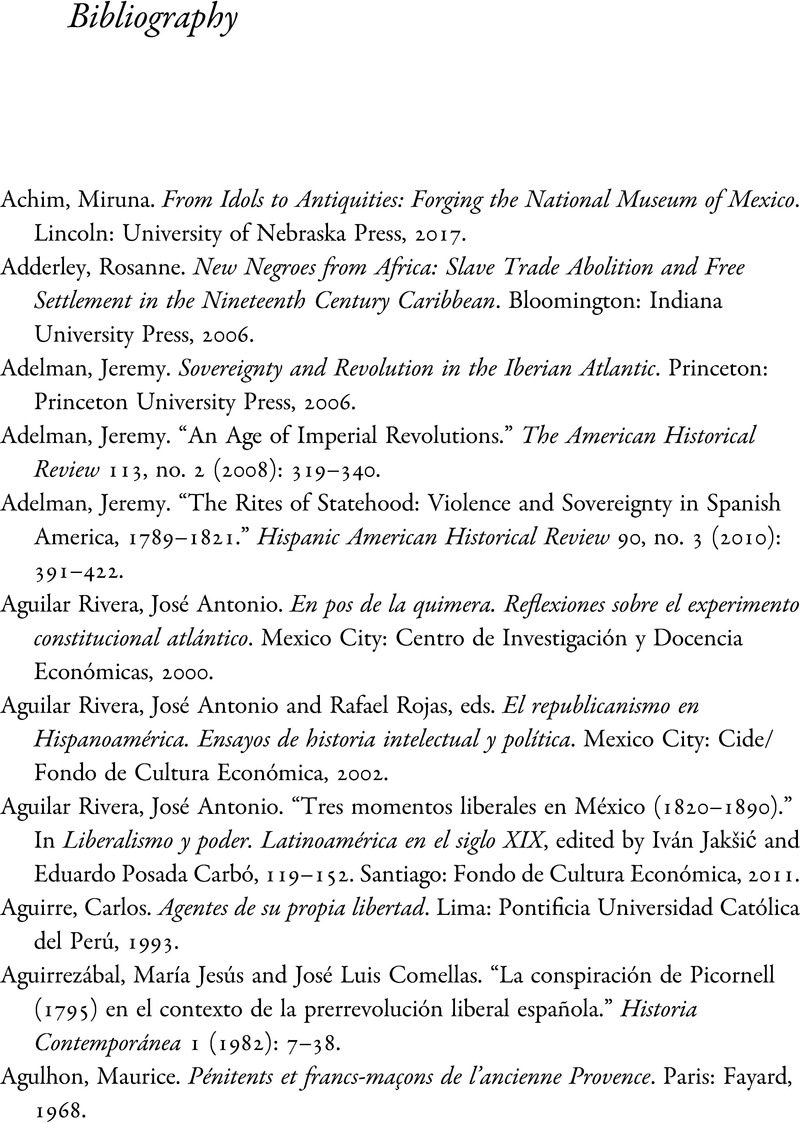Book contents
- The Cambridge Companion to Latin American Independence
- The Cambridge Companion to Latin American Independence
- Copyright page
- Dedication
- Contents
- Figures
- Maps
- Contributors
- Acknowledgments
- Maps
- Introduction
- 1 On the Origins of Latin American Independence
- 2 Constitutionalism and Representation in Ibero-America during the Independence Processes
- 3 Foreign Interaction and the Independence of Latin America
- 4 Public Opinion and Militarization during the Wars of Independence
- 5 Natural Histories of Remembrance and Forgetting
- 6 Brothers in Arms
- 7 Beyond Heroes and Heroines
- 8 Views of the Latin American Independences from the Iberian Peninsula
- 9 Shades of Unfreedom
- 10 Early Liberalism
- Bibliography
- Index
- References
Bibliography
Published online by Cambridge University Press: 16 March 2023
- The Cambridge Companion to Latin American Independence
- The Cambridge Companion to Latin American Independence
- Copyright page
- Dedication
- Contents
- Figures
- Maps
- Contributors
- Acknowledgments
- Maps
- Introduction
- 1 On the Origins of Latin American Independence
- 2 Constitutionalism and Representation in Ibero-America during the Independence Processes
- 3 Foreign Interaction and the Independence of Latin America
- 4 Public Opinion and Militarization during the Wars of Independence
- 5 Natural Histories of Remembrance and Forgetting
- 6 Brothers in Arms
- 7 Beyond Heroes and Heroines
- 8 Views of the Latin American Independences from the Iberian Peninsula
- 9 Shades of Unfreedom
- 10 Early Liberalism
- Bibliography
- Index
- References
Summary

- Type
- Chapter
- Information
- The Cambridge Companion to Latin American Independence , pp. 336 - 396Publisher: Cambridge University PressPrint publication year: 2023



